
Censorship, muddled thinking undermine Shenzhen-Hong Kong expo on urban design and architecture
Cross-border exhibition meant to bring the cities together instead highlights differences and throws up contradictions, not least its staging in an urban village in Shenzhen without reference to Beijing’s razing of such settlements
The clumsily named Bi-City Biennale of Urbanism\Architecture is a cross-border exhibition whose premise is to bring Shenzhen and Hong Kong together; in fact, in an echo of China’s “one country, two systems” formula for ruling Hong Kong, the show operates on the principle of “one biennale, two systems”.
The event’s seventh edition, which opened last week, continues to see the two sections run as separate entities with their own curators – and the result is two very different shows, each with its own problems.
It remains a rare and important platform for architects, artists and urban planners to consider the future of urban living while being informed by the unique geography of the biennale’s host cities, smack bang in the heart of the world’s most populated city cluster around the shores of the Pearl River Delta. But the time has surely come to review whether it should continue in its current form.
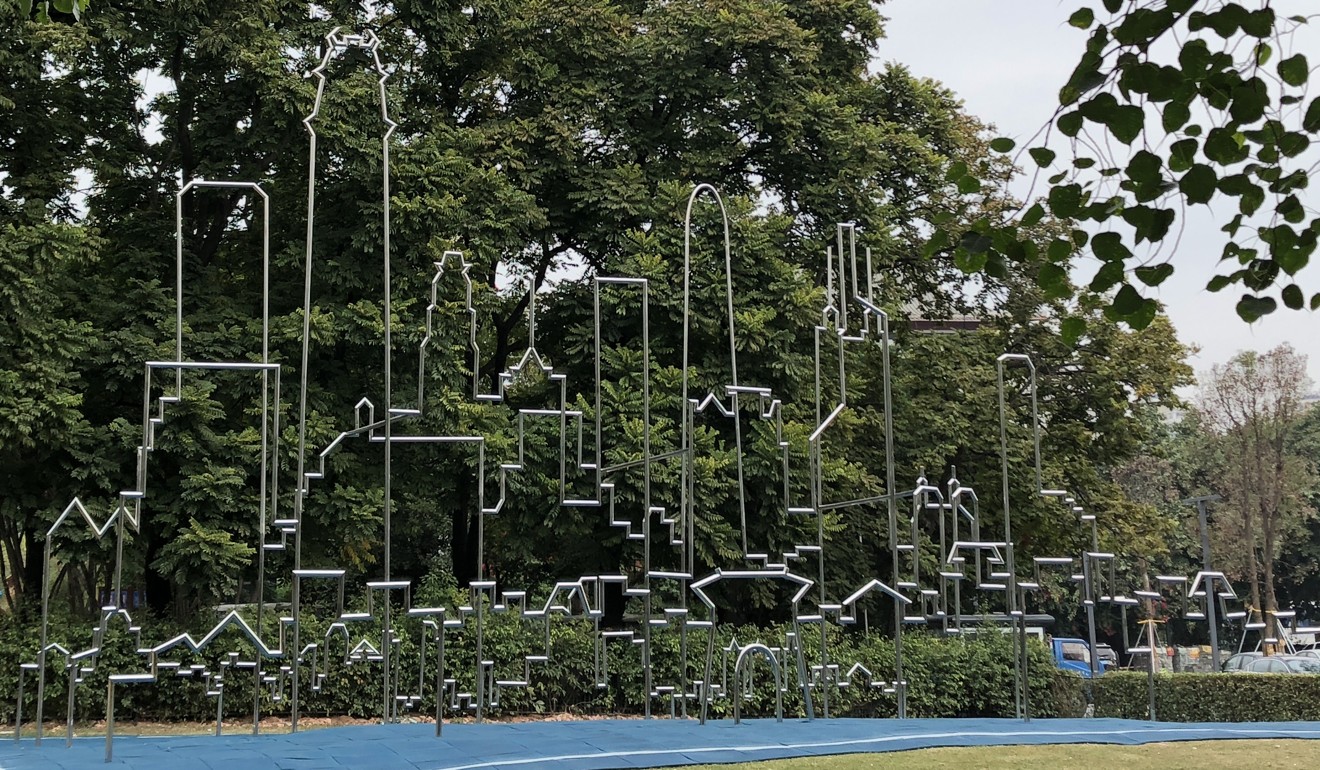
The Shenzhen section is organised by the city government and it is always a big-budget, big-impact affair. The venues are often large, vacant buildings that give scope for architectural experimentation and a visitor experience that curators on the Hong Kong side can only dream of.
Previous editions of the biennale served as exceptional examples of how to transform vacated industrial buildings in Shenzhen’s OCT East industrial zone and Shekou district. This year is a bit different. The main venue is Nantou Old Town, a 1,700-year-old neighbourhood that is a village within the city. It is a densely populated, unregulated mishmash of heritage buildings and subdivided modern additions where affordable rents can still be had by those willing to put up with living in buildings that don’t meet modern fire-safety and hygiene standards.
Such urban villages are no longer tolerated in Shenzhen. Baishizhou, the largest of them all, is likely to be torn down next year to make way for high-rise apartment blocks and shopping centres. But Nantou’s historic value will probably save it from demolition.
The last days of Shenzhen’s great urban village
According to Zhou Baomin, head of the Nanshan District Culture And Sports Bureau, the biennale may present an alternative, more culturally sensitive model for the development of Nantou that will avoid wholesale destruction.
The focus on urban villages could not have come at a more appropriate time. In November, a fire in a Beijing urban village killed 19 people, and prompted the city government to evict tens of thousands of migrant workers from their homes in freezing temperatures.
Shenzhen has a heavyweight team of curators for the biennale headed by Hou Hanru, fresh from co-curating “Art and China after 1989: Theatre of the World” at New York’s Guggenheim Museum. Two of China’s most respected architects, Liu Xiaodu and Meng Yan, partners of Urbanus Architecture & Design, are members of the team.
The curators slaved for months to convince Nantou residents and absentee landlords – many now living in Hong Kong – to give them the green light to beautify neglected corners and transform an unloved neighbourhood into an inspiring venue for public sculptures, murals and, for the next three months, countless exhibitions and events exploring ways to make life better in a megalopolis.
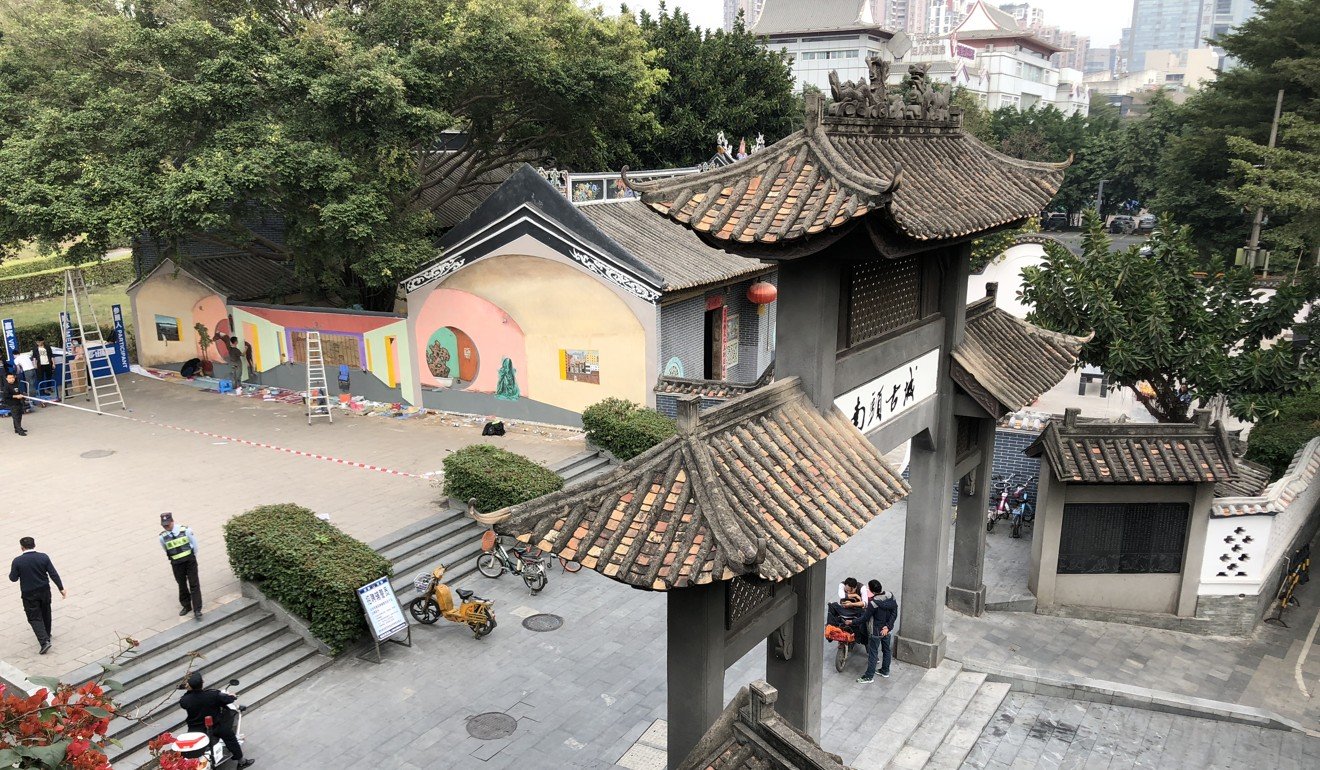
Visitors entering through the old town’s south gate will walk past Yin Xiuzhen’s The Arena (2017), an inviting steel monkey bar, sitting on a green lawn, made in the shape of Shenzhen’s skyline and which the public are welcome to use. They then go through the old city wall, where they may encounter dancers performing – to the delight of residents returning home – or the 94-year-old radical architect Yona Friedman building an improvised “Street Museum” with local participants.
Shenzhen’s new design museum should give Hong Kong food for thought as it awaits completion of M+ museum of visual culture
Further in, an abandoned factory compound has been transformed into exhibition spaces that feature some stunning artwork and eloquent academic displays on urban design.
Some works spell out how things are today. Near a collection of striking black-and-white photographs of migrant workers from the 1990s is Wang Zigeng’s model of a rusty old ocean liner that is supported by illustrations of trapped slaves on a ship, a criticism of the global outsourcing of manufacturing.
Panels by Beijing’s Drawing Architect Studio meticulously record changes that have been made to a street known as “Dirty Street” in Sanlitun, one of many examples of traditional hutongs in the Chinese capital that have been turned into a playground for the middle class.

Other works offer proposals for how things can be – for example, flats equipped with 3D printers for creating a custom-made living environment, and illustrations of typical urban village buildings enhanced by an external, sloping walkway or a shared swimming pool to bind the community together.
A home you can buy for US$15,000? It’s not a pipe dream in world’s priciest real estate market, Hong Kong
There are hundreds more works, while workshops, talks and performances featuring more than 200 participants from 25 countries will be held over the next three months in Nantou and five other satellite sites across Shenzhen.
The transformation of Shenzhen in recent years has shown that its local government is open to imaginative proposals. But the biennale also shows the impossibility of having open debate in Shenzhen and shows how the heavy hand of government undermines the spirit of inclusiveness suggested by the biennale’s title, “Cities Grow in Difference”.
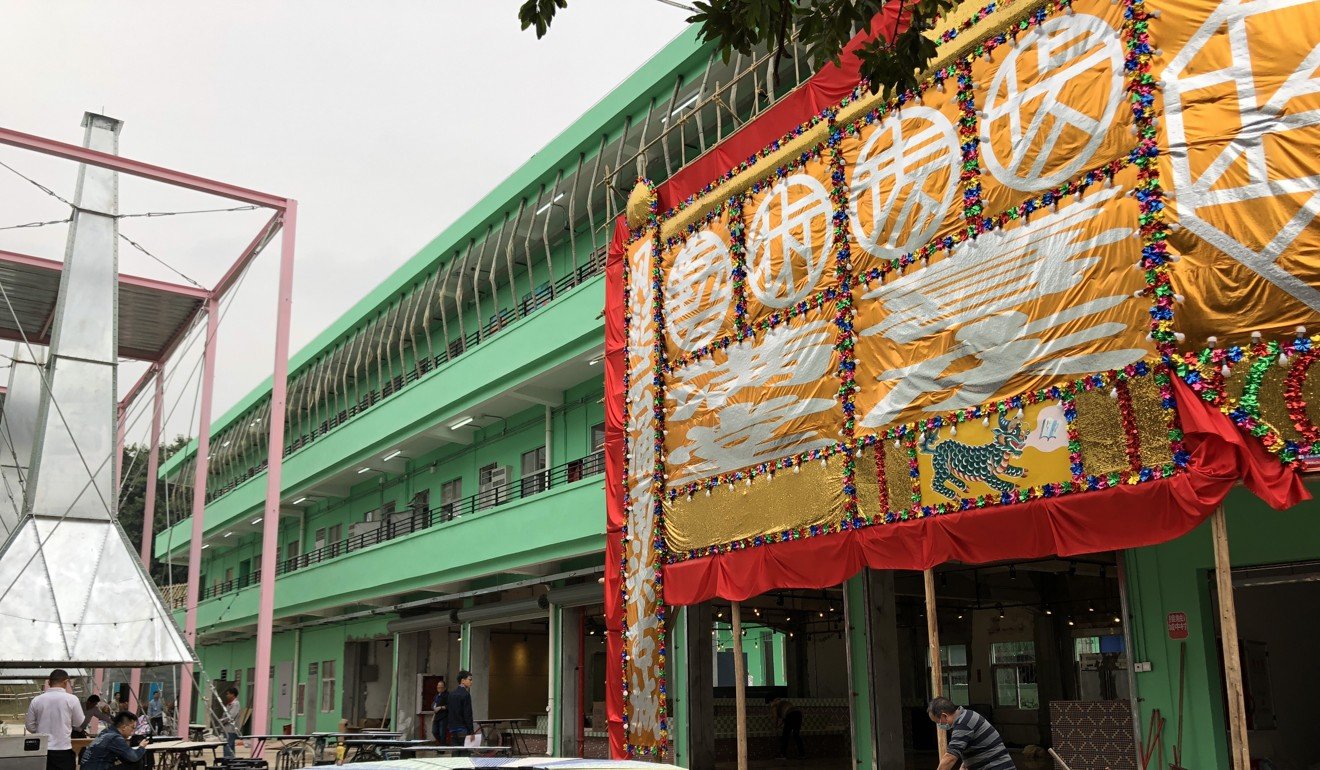
Last Thursday, a day before the event’s official opening, two young Chinese artists could be seen putting the final touches to a surreal mural that was, rather radically, being applied to the outside wall of a historic temple dedicated to mythical Chinese general Guan Gong. Their really radical act, it turned out, was the depiction of an empty blue chair in the centre of the mural.
Artist Hu Jiamin and his wife included it as a tribute to the late dissident Liu Xiaobo, who was in jail in China when he was awarded the Nobel Peace Prize in 2010. A similar chair was placed at the ceremony in Oslo where that year’s Nobel Prizes were handed out as a pointed symbol of his absence. By Friday night, the offending artwork had been covered up and the artists detained.
Artist behind daring tribute to late dissident Liu Xiaobo out of contact in China
Then there is the silence over what is happening in Beijing, which surely must weigh on any discussion about the development of urban villages in China today. Questions about whether the biennale could offer guidance to Beijing or elsewhere are quickly deflected by organisers.
Residents of Nantou are also suspicious that the biennale may be some grandiose exercise that kills the chance of property owners getting redevelopment compensation. In addition, there are fears that it will speed up gentrification in the area.
How the mass eviction of migrant workers has left Beijing reeling
A 17-year-old migrant worker living there told the South China Morning Post he expected he would have to return to his home in Jiangxi province, in southeast China, now that “only rich people are allowed to live here”. Others, unlike him, have no other homes to which they can return.
There are other problems. Cleaners mistakenly swept away part of Hong Kong artist Lam Tung-pang’s work Disappeared Hong Kong Art, which only added to the huge amount of debris that a fleet of diggers were still busy shovelling away just before the biennale’s opening on December 15.
What officials want to focus on is Nantou’s historic – and political – value. The old town is the former seat of government of an ancient Chinese district that ruled both Hong Kong and Macau. In the Nantou Old Town Museum, a section is called “Shenzhen and Hong Kong share the same roots” – a handy resource for those determined to snuff out Hong Kong’s independence movement.
The Hong Kong side of the biennale is free of censorship and heavy political messages. Organised by the Hong Kong Institute of Architects, it has never had – and probably will never have – the resources to compete with the scale of the biennale’s Shenzhen section; but that doesn’t excuse or explain this edition’s embarrassing, excruciating tone of self-congratulation, dangerously half-baked arguments and failure even to put up a finished website in time for the event’s opening.

The Hong Kong section is called jup saang in Cantonese, which means making the best out of a bad turn of events, or simply, improvising. The team of curators, headed by Chan Lai-kiu, has placed hard-to-find exhibitions in the cracks and crevices of space-starved Hong Kong, such as the Central MTR station, underneath a flyover, and an office lobby in Causeway Bay. These, they say, are improvised venues.
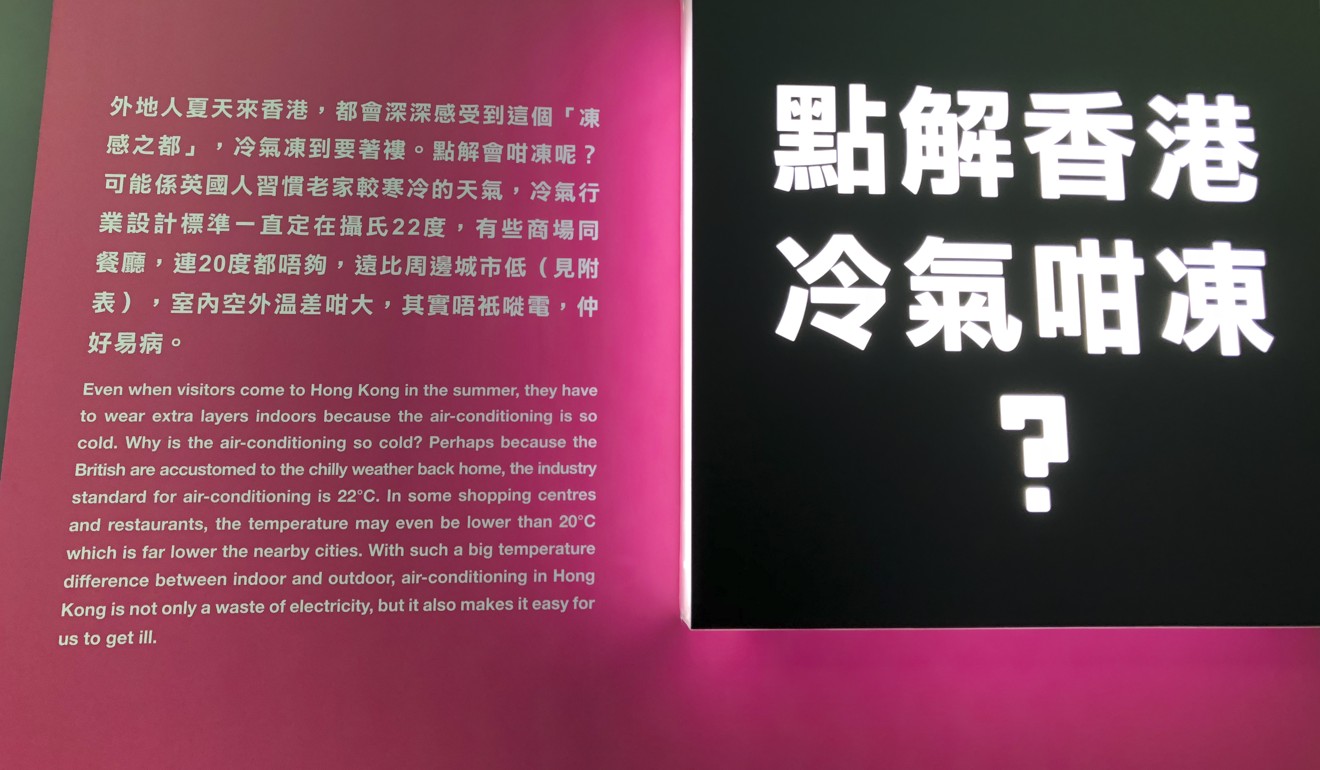
“Concrete Jungle 2.0” – a project that seems to propose through a few pots of lettuce and tomatoes placed under a Central flyover that having more green pockets in the city might justify shrinking Hong Kong country parks – features such toe-curling, and on occasion inept, gems of self-congratulation as: “The success of Hong Kong is, undoubtedly, a legend” and “Equipped with fast, efficient and flexible abilities, Hongkongers are very good at ‘improvising’ …”.
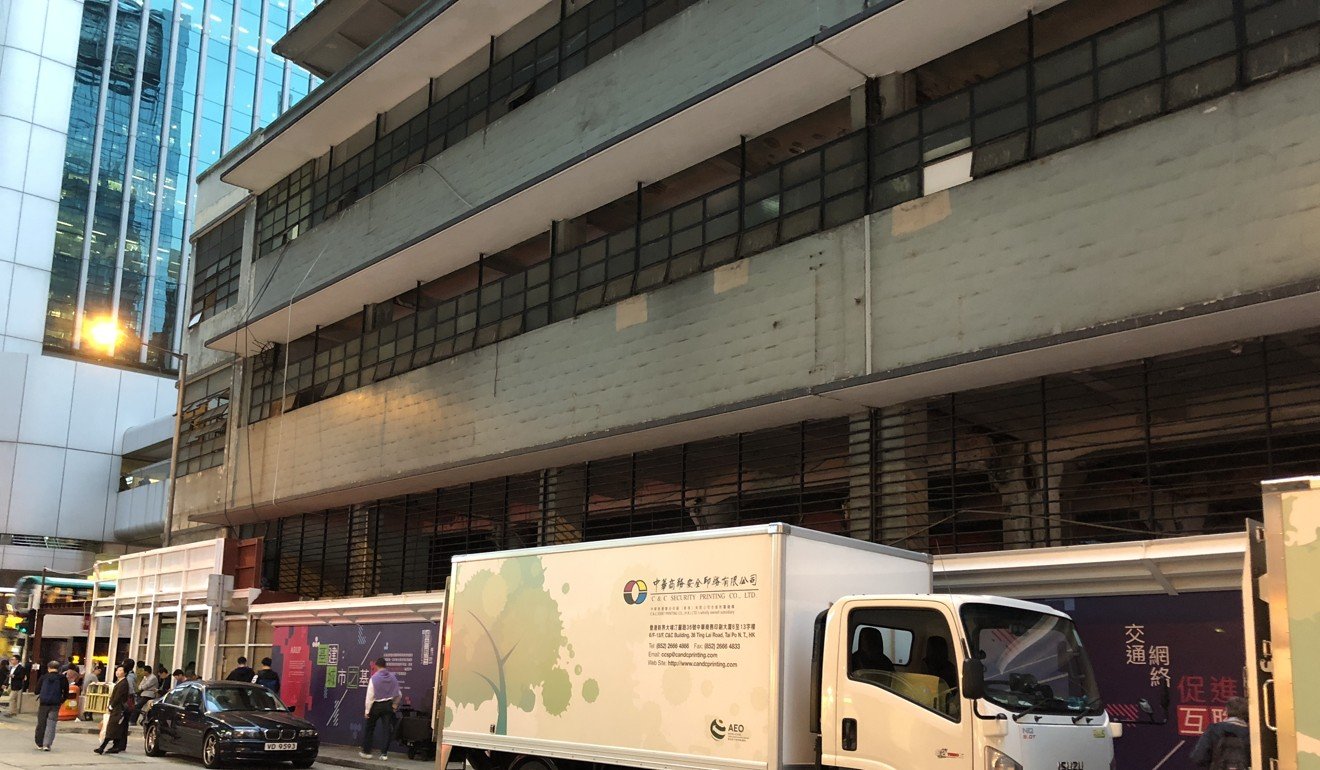
“City Trivia”, a historical timeline and a series of questions and answers about Hong Kong’s urban development, is presented on hoardings outside the Central Market and along its internal walkway. Unfortunately, it highlights Hong Kong’s falling English standards (see images) and makes some very odd – and jarring – assertions that take the post-colonial blame game to a new level. For example, the reason why Hong Kong’s air conditioning is too fierce, apparently, is that the Brits weren’t being used to the city’s hot climate.
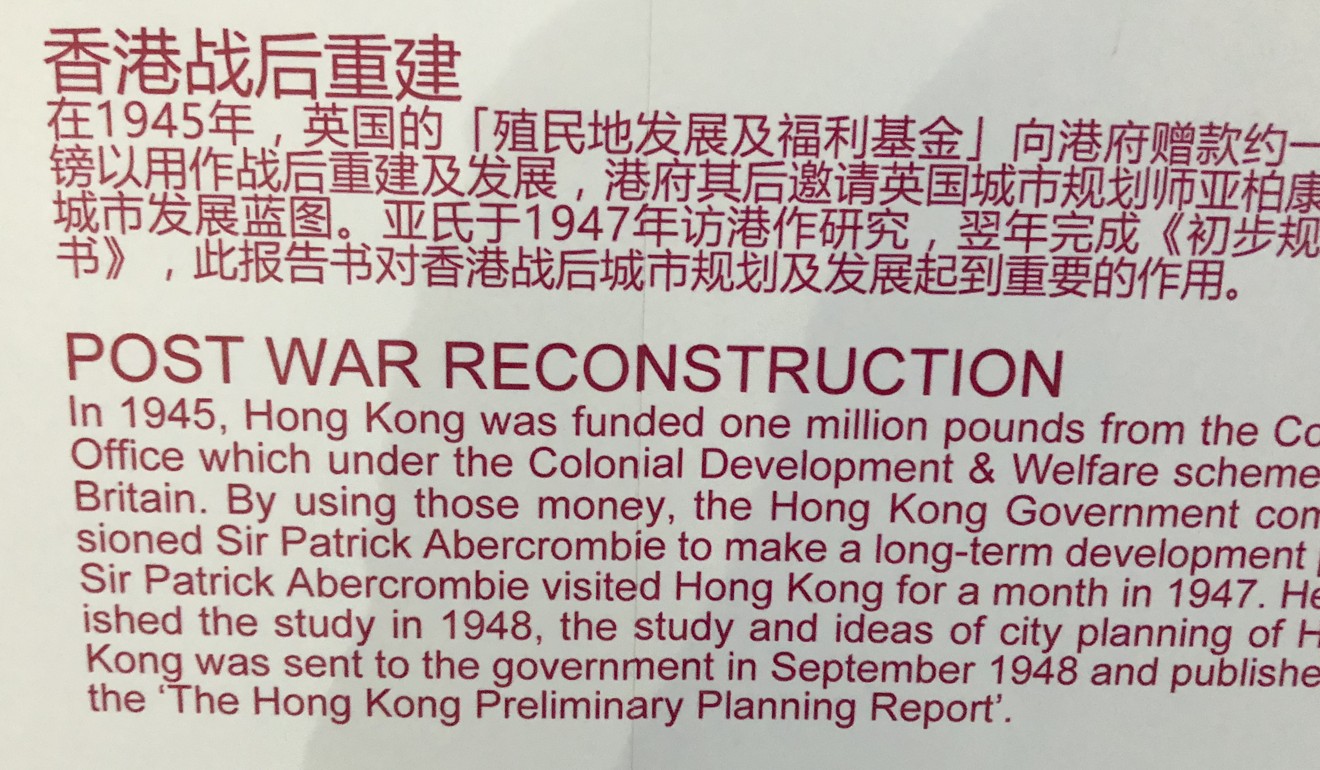
The row of permanently parked delivery trucks outside the market also makes this an ill-judged location for any display along its outside walls, although its low profile may explain why there haven’t been protests about curators’ idiosyncratic decision to use simplified Chinese characters for the timeline when every other Chinese text in the biennale is in traditional characters, the norm for Hong Kong.
What the Shenzhen curators have accomplished despite their many challenges is admirable, whereas the Hong Kong section really let the side down this time. Let’s hope future editions will provide a more convincing picture of cross-border cooperation as the central government continues to dream of an integrated Pearl River Delta.
The 7th Bi-City Biennale of Urbanism\Architecture is held across multiple sites in Shenzhen and Hong Kong until March 15, 2018.

